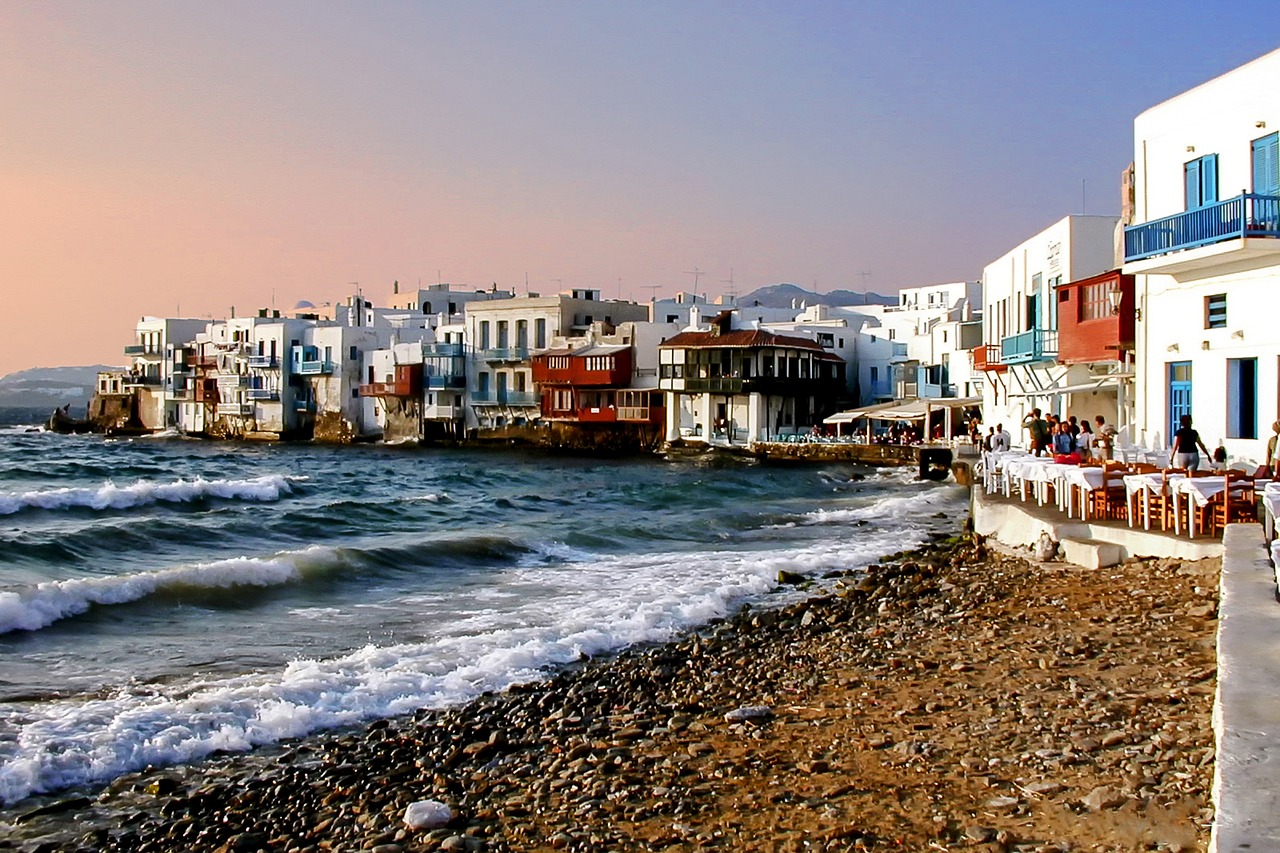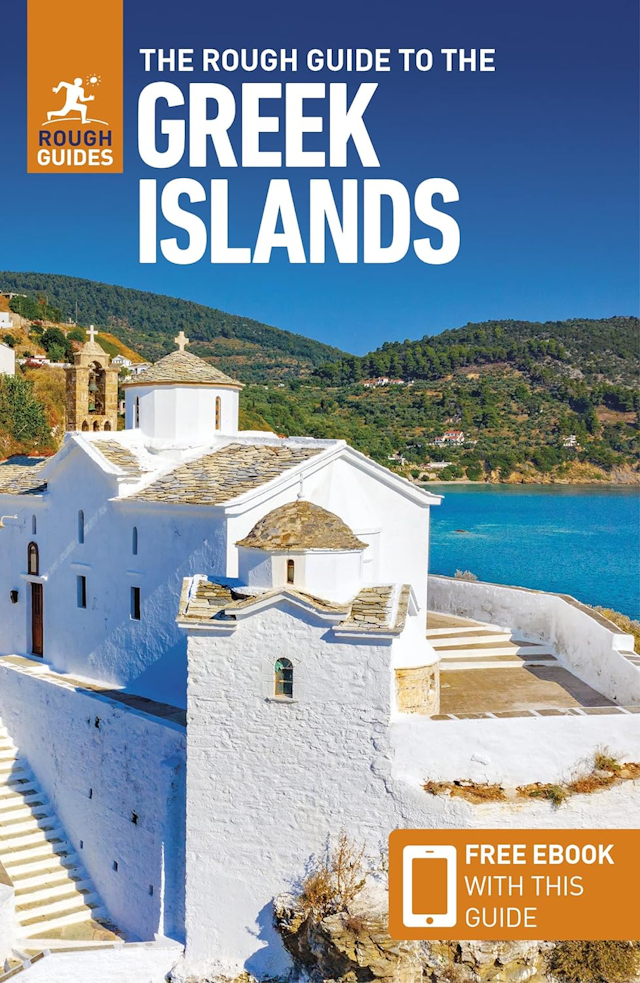Things to Do on Mykonos
There are plenty of things to do on Mykonos, one of the most popular Greek islands, such as nightlife, beaches, churches and visiting the ancient site of Delos.
At only 85.5 sq kms (33 sq mi) and with a population of about 10,000, Mykonos is a fairly small island. Yet there are enough things to do on Mykonos to keep people visiting year after year, and making it one of the most popular islands in Greece.
Things to Do on Mykonos
Beaches
Mykonos may not have the best beaches in Greece but it certainly has some of the busiest. You don't go to Mykonos for a beach holiday and hope to get away from it all. It does have some good beaches but aesthetics doesn't come into it if a beach gets a reputation for being 'the' place to be one year.
If you want to sample Mykonos's beaches you need to do some homework first and ask what the various beaches are like. If you're staying in Mykonos Town - which is the only major settlement on the island - then you can reach a number of beaches by either bus or by boat.
Be sure to check what a beach is like, and what facilities are there if you're thinking of being dropped at a particular beach. Also double-check the return times for buses and boats.
The most famous, or notorious, beach on Mykonos is Paradise Beach. This is on the south coast, about a 20-minute drive from Mykonos Town, so close enough to get a taxi there and back if you're not renting a car or other transport. It is a lovely big sandy beach, though in summer you can hardly see the sand for the bodies packed on top of it. It is the beach to go to if you want to join in Mykonos's party scene, with lots of lively beach bars and music.
Not to be out-done, the next beach along has dubbed itself Super Paradise, which is more of the same but has also become known as gay-friendly and, at one end, is also a clothing-optional beach.
Churches
Mykonos has a remarkable number of churches, and there's a reason for that. It used to be a law that if you wanted to build a house on your land you must first build a church on it. Many of these churches survive, some of them tiny, but none of them photographed as much as the Panagia Paraportiani (Church of Our Lady).
This strange-looking church is actually a collection of four small chapels that have been amalgamated into one building. It stood next to the entrance to the old castle, or kastro, which used to exist here and which gives its name to the whole district of Kastro.
Monasteries
Mykonos also has a couple of monasteries worth seeking out, one in and the other near the island's second settlement, the village of Ano Mera. Right on the village's main square is the 16th-century Monastery of Panagia Tourliani, while just to the north of the village is the even older 12th-century Paleokatro Monastery.
It takes about 90 minutes to walk from Mykonos Town to Ano Mera, which is right in the centre of the island and a world away from the beaches and nightlife.
Museums
Despite its party reputation, Mykonos does have a lot of culture to take in as well. It has, after all, been inhabited since at least the 11th century BC and since then has been inhabited by the Romans, been part of the Byzantine Empire, been invaded by the Venetians, and then the Turks. Mykonos played an important part in the Greek War of Independence.
All of this history is celebrated in several museums on Mykonos, mainly in Mykonos Town. Here you'll find the Archaeological Museum, with much about Delos of course, and also a Maritime Museum. There's also a Folklore Museum and finally there's Lena's House, a restored 19th-century family home.
Nightlife
It's impossible to list all the nightlife options on Mykonos, some of which in any case change from year to year. Mykonos Town is the nightlife capital of the Cyclades, and if that's your thing then you won't be disappointed. Take plenty of cash and plastic, though, as Mykonos Town is also the most expensive place in the Cyclades.

Visiting Delos from Mykonos
If you want to see the unique archaeological site of Delos - unique because the entire island, which has no inhabitants, is an ancient site - then you have to go by boat from Mykonos. Boats start to leave Mykonos in the early morning and keep going through to about 5pm, in season. They allow you to spend a few hours on Delos, till the site closes. This is usually mid-afternoon out of season and by about 8pm in the summer season.
No-one is allowed to stay overnight on Delos. The island only has one small café so be sure to take food and drink with you. For further information and the history of Delos see our Delos page.
Getting to Mykonos
See our main Mykonos page.
More Information
See the excellent website of the Municipality of Mykonos.
Latest Posts
-
The Lesser-Known Traditions of Greek Easter
Step off the beaten path this spring and discover the enchanting — and often surprising — Easter traditions found across Greece. -
Easter in the Mystical Castle of Monemvasia
In the castle town of Monemvasia, with its dramatic medieval backdrop and sea views, Easter is a deeply spiritual and atmospheric experience. -
Sifnos: Greece’s Hidden Culinary Star on the Rise
Sifnos, a Cycladic island, is gaining fame for its rich culinary heritage, especially the beloved melopita honey-cheese tart. -
Easter in Leonidio: A Tapestry of Light, Culture and Cliffs
In Leonidio, Easter comes alive with handmade hot air balloons in the sky and lanterns made from bitter oranges in the streets. -
April 9 Strike in Greece to Impact Public Transport, Ferries and Air Travel
Transportation and travel across Greece will face disruptions on Wednesday, April 9, as public transport, ferry and aviation workers join a nationwide strike called by Greek labor unions. -
Ancient Theater of Lefkada Brought Fully to Light Following Systematic Excavation
The Greek Culture Ministry has announced that the first ancient theater ever identified in the Ionian Islands has recently been brought fully to light on Lefkada, revealing an impressive monument that… -
Seven Greek Traditions Recognized as Intangible Cultural Heritage
From traditional barrel-making to age-old folk dances, seven new entries on Greece’s National Inventory preserve the country’s living heritage for future generations. -
Greek Air Traffic Controllers to Hold 24-hour Strike, Disrupting Flights on April 9
The Hellenic Air Traffic Controllers Union have announced a 24-hour strike for Wednesday, April 9, in response to the protest called by the Civil Servants’ Confederation (ADEDY). The strike is being h… -
Ten Best Budget Hotels on Santorini
Greece Travel Secrets picks the ten best budget hotels on Santorini, some with caldera views, some near beaches and some close to the heart of Fira. -
No Ferries in Greece on April 9 as Seamen Join Nationwide Strike
The Pan-Hellenic Seamen’s Federation (PNO) has announced its participation in the 24-hour strike called by the General Confederation of Greek Labor (GSEE) on Wednesday, April 9. The strike, which will…

















